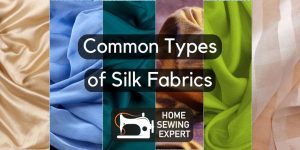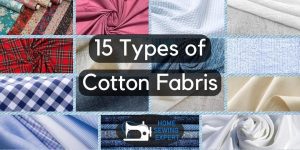With such hundreds of types in the world – synthetic to natural and woven to knitted fabrics, it is confusing to select one, and all these types cannot be summed up without a 500-page book on different types of fabric, and still, there will be no guarantee that you comprehend all.
However, there are just a handful number of fabrics that you need to know if you are starting a business or projects. So here is my guide to the 15 most common types of fabrics that you must know if you are looking into a fabric business.
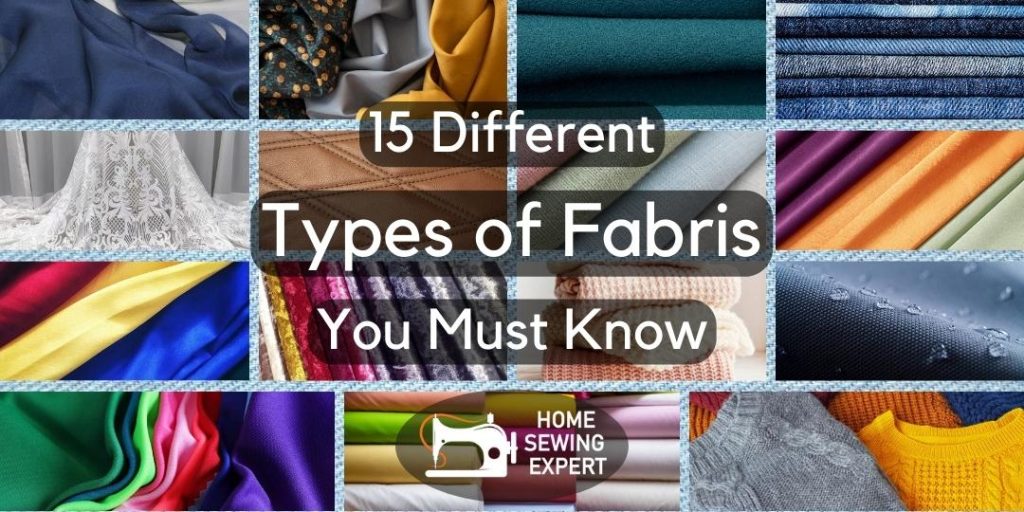
Types of Fabrics
First, clarifying that fabrics can be categorized in three ways – based on their origin, way of manufacturing, and martial composition, while the latter being the most dominant can commonly inquire the type of fabric.
However, we will brief on both origin and manufacturing of fabric while keeping the composition a bit more yet comprehensive.
Fabric types based on Origin – Natural vs Synthetic Fabric.
There are two types of fabric when categorized based on their origin.
As their names imply, either the raw material is extracted from nature and processed to produce fabric, or it is artificially created by humans through different chemicals.
Fabric Type based on Manufacturing – Woven vs knitted fabric
Based on the manufacturing technique, the threads of the fabrics might be woven or knitted to produce their respective type of fabric.
Woven fabrics are made by interweaving horizontal and vertical fine strands of yarn on a loom, thus making a fine piece of fabric. This fabric consists of wefts, and wraps interweaved at a 45° angle, making it unstretchable.
Still, woven fabric is much finer, economical, easy to manufacture, and more durable than knitted fabric.
There are three common techniques to weave a fabric that are
- Plain weave fabric is the easiest technique and results in a highly durable and smooth finish.
- Twill weave fabric, which is to create a diagonal pattern on the fabric and gives a bit of stretchiness to the fabric. Its prime example is Denim.
- Satin weave fabric is a shiny fabric that reflects light but is delicate. Fabrics for suits are a prime example here.
On another hand, knit fabrics are made by interconnecting loops, which add significant stretchability to the fabric as. Well, they are warm as the yarn is thick, and the knitting gives adequate porosity to add air insulation.
Jersey and fleece are prime examples of knit fabrics.
Types of Fabrics Material
Now, based on material, there are again numerous types of fabrics. Materials like cotton, leather, wool, silk, polyester, rayon, and acrylic are some of the common types of materials.
These materials can be used in different techniques to produce a unique fabric. For example, cotton is used to make denim which is a common fabric. Likewise, satin is a common fabric known for its woven technique, which can be made of different fabrics – cotton, silk, polyester, etc. So its name becomes cotton satin, silk satin, polyester satin, and so on based on the material.
Thus different materaials, when produced through different techniques, produce a fabric that has a particular name in textiles. And Now, we will discuss 15 common fabrics that you will find in the textile sector.
15 Different Types of Fabrics You Must Know
Cotton

Extracted staple of cotton plants is processed to create cotton, the most popular fabric in the world.
Cotton is known for its fungibility of usage, durability, and sturdiness. Also, it is almost pure cellulose, making it the most comfortable and non-allergic fabric.
It is used in a number of textiles products, including terry fabric, jeans, T-shirts, Dress-shirts, bed sheets, fleece, undergarments, and more.
It’s also a breathable fabric that doesn’t dry quickly and wrinkles and shrinks as well.
Besides all its comforts and advantages, it is getting expensive day by day due to the increasing water shortage in cotton-producing countries.
Silk

Silk is a soft fabric that is made of silk fibers produced by different insects called silk worms but the only silk used in textile is of moth caterpillars.
What makes silk fabric special is its lustrous shimmery appearance. The silk fiber has a triangular pattern so that it gives an elegant reflection at a different angle.
Another thing that makes it special is its strength and comfort. It is one of the toughest natural fabric and is hypoallergenic and have a gives gentle touch.
Silk is commonly used in lustrous shirts, nighties, blouses, lingerie, ties, and scarves.
Wool

Wool is a warm and expensive fabric that is obtained from the fur of animals such as sheep, goats, alpacas, and many other mammals and can be knitted or woven.
Wool is a rough and tough fabric that lasts decades. It is highly resistant to wrinkle and shrinkage but has to be hand washed or dry-cleaned. As it’s itchy directly to the skin, it is worn over other fabrics to keep the body warm.
A most common use of wool fabric is in jerseys, sweaters, socks, winter coats,s and many other winter garments.
Nylon

Nylon is a petroleum-based synthetic fabric that is tougher than any other fabric and even many metals. It is also a lightweight, elastic and lustrous fabric which makes it highly durable.
However, it is not a breathable fabric for which it has a few applications in apparel and is mostly used only in parachute jackets. Other applications of nylon are tents, ropes, parachutes, floorings, etc.
Polyester
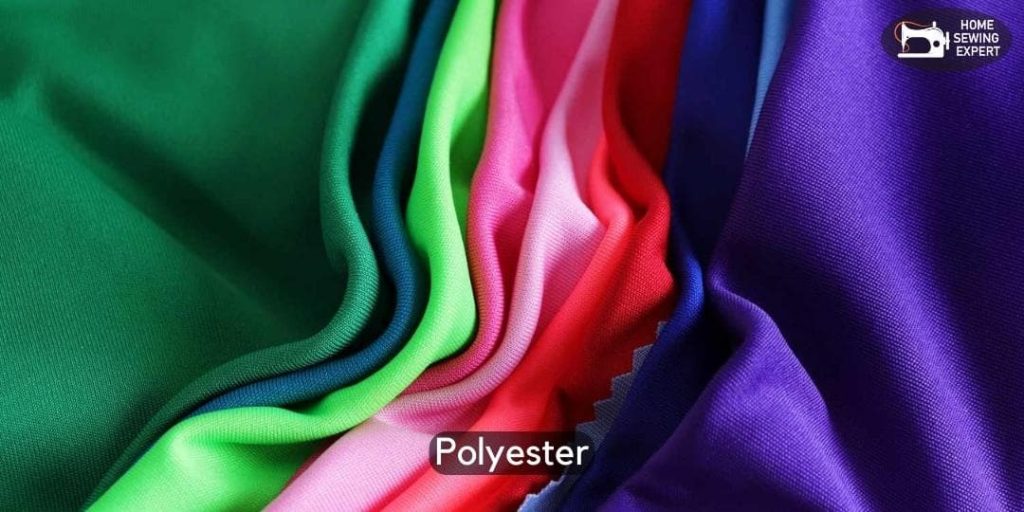
Polyester is the world’s most popular synthetic fabric and has competition with many natural fabrics, including cotton, in the apparel industry.
Like other synthetic fabrics, polyester has high water, wind, and environmental resistance as compared to plant-based fabrics. Also, it is shrinkage and wrinkle-free. However, polyester is not heat-resistant and melts when ignited.
The most common application of polyester is its blend with other natural fabrics to improve the wrinkle and shrinkage-related properties of the fabric.
Rayon
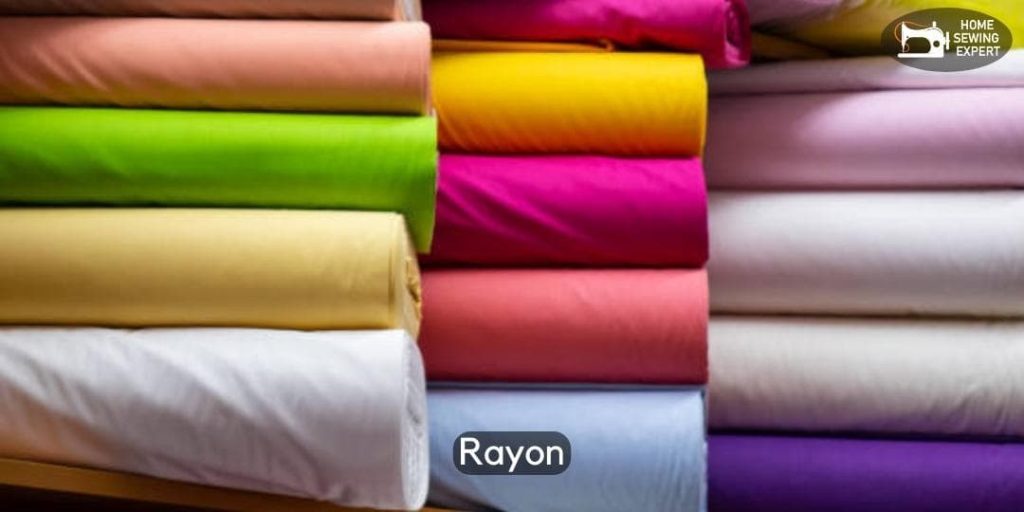
Rayon is a semi-synthetic fabric this is made by regenerating cellulose from wood pulp and other agricultural products. That is why it resembles the texture and feel of other natural fibers like cotton, wool, linen, etc.
Due to its striking resemblance with silk, it is also called artificial silk but what makes it stand out is its inexpensive price.
Acrylic
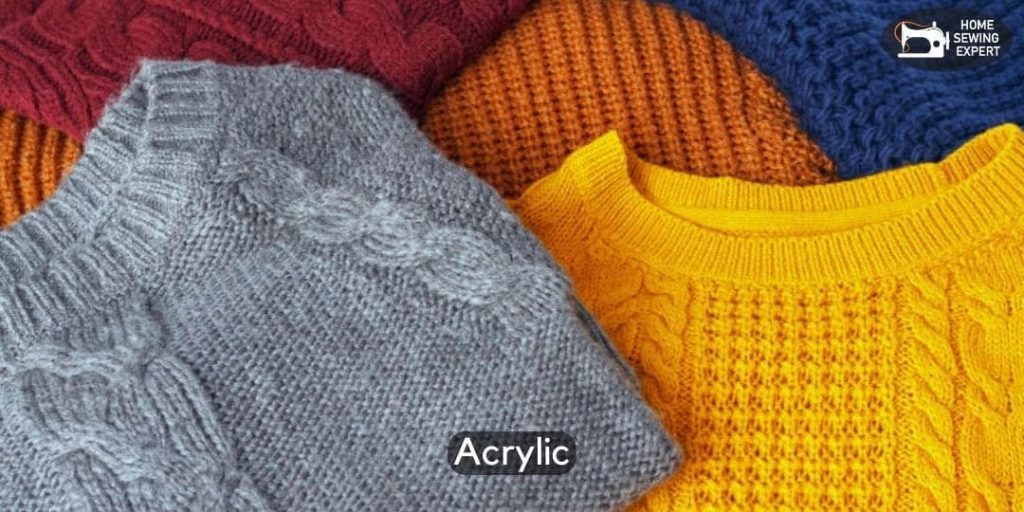
Acrylic is a synthetic fiber that is lightweight, soft, warm, and an alternative to much more expensive natural wool. Its fiber is very resilient when compared to other fabrics – natural or synthetic and can even be bleached.
A very common application of acrylic is its bend with wool to make a tougher and softer fabric for jerseys, sweaters, socks, and other winter apparel. As it absorbs very little water, its blend with wool also makes the fabric dry more quickly.
Leather
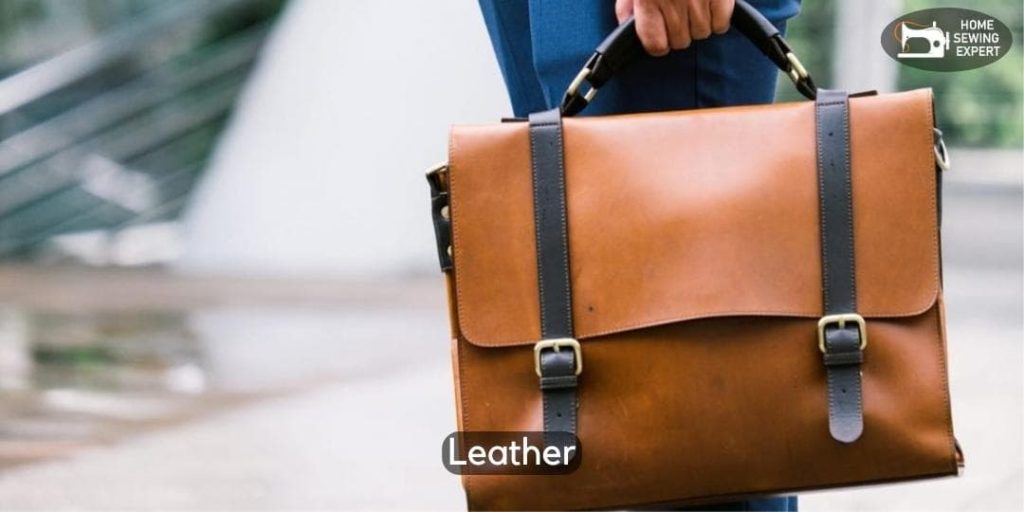
Leather is a natural fabric obtained by tanning and treatment of animal skin. It’s highly durable, stylish, wrinkle-free, and flexible with a large number of usages.
The most common leather fabric is obtained from the skins of cattle, goats and sheep, horses, and pigs. While some luxurious leathers are made of seals, alligators, and even snakes. And virtually, there is no limit to the number of animals from which leather can be obtained.
Based on the name of an animal, the leather name can be sheep leather, horse leather, snake leather, and so on.
Talking about leather products, there is, again, no limit. It can be used for a wallet and purse belt and shoes. Leather is also the most common fabric for jackets and in old fashion days, it was even used to make leather pants.
Linen

Linen is one of the oldest fabrics made of cellulose fiber from flax fiber and has been used since the earliest civilizations – Mesopotamian and Egyptian and is even mentioned in the Bible.
It has the characteristic of being strong, absorbent, and faster drying than cotton but has a higher tendency to wrinkle. Otherwise, based on its outlook, it is similar to cotton.
Due to its absorbent and drying properties, it is highly used in napkins, dish towels, diapers, tablecloths, shirts, and skirts.
Chiffon
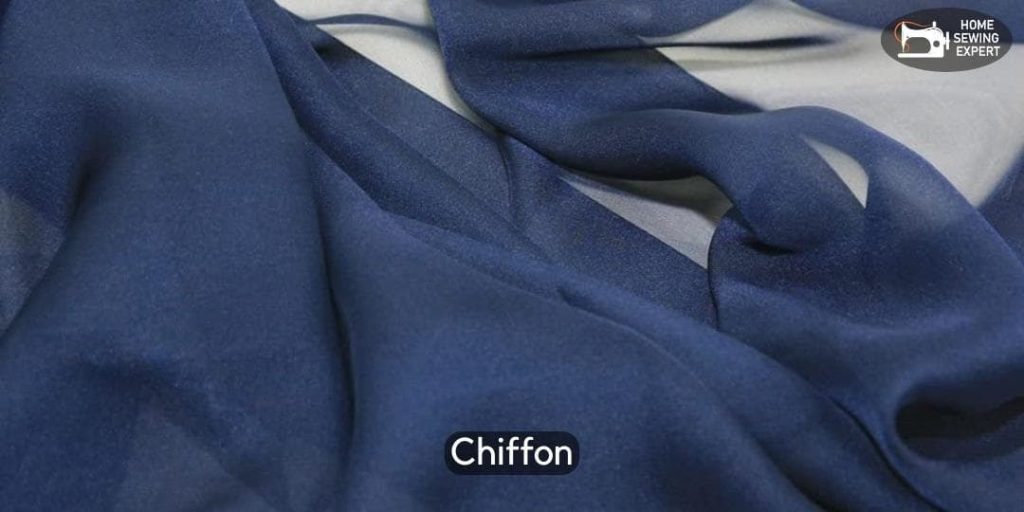
Chiffon is a lightweight and sheer fabric that is a symbol of elegance and luxury and is very expensive, and is associated with high status.
It is usually used in elegant female dresses as it drapes well and has a shimmery and sheer outlook. This highly delicate fabric can be produced as natural or synthetic.
Historically, chiffon was made form purely from silk and had amazing colors as silk absorbs dyes.
But now polyester silk is also getting immensely popular as it is more durable, sturdier, and economical.
Crepe
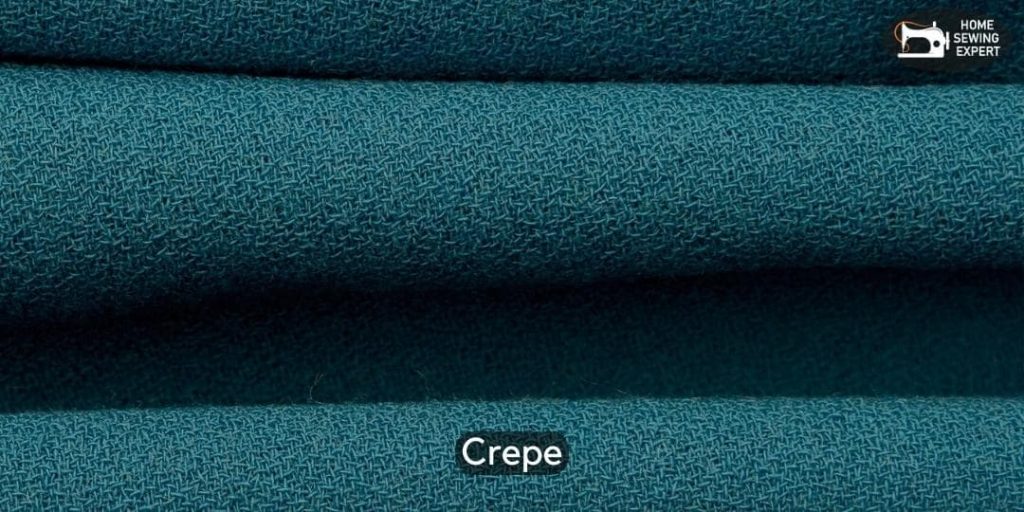
Crepe is a lightweight twisted-plain woven fabric with a bumpy and grainy texture. Traditionally it was made from silk, but now it can be made from almost any yarn – cotton, chiffon, wool, and more.
Based on its fiber, this versatile fabric may be called crepe silk, crepe cotton, crepe chiffon, crepe wool, and so on.
Crepe has evolved from a mourning dress to a ceremonial dress and is often used in high fashion dresses and decorative apparel as it’s soft and has a peculiar grainy and wrinkle-free outlook.
Denim
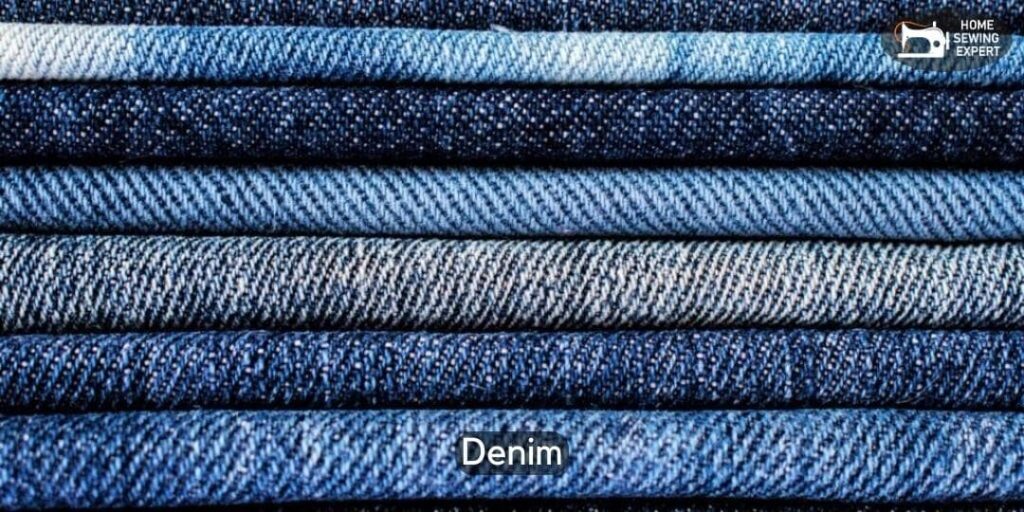
Denim is another cotton woven fabric well known for its peculiar texture, sturdiness, and comfort.
This is the most common fabric that is used in jeans, and jackets and is usually dyed in blue, black, or gray colors.
Lace
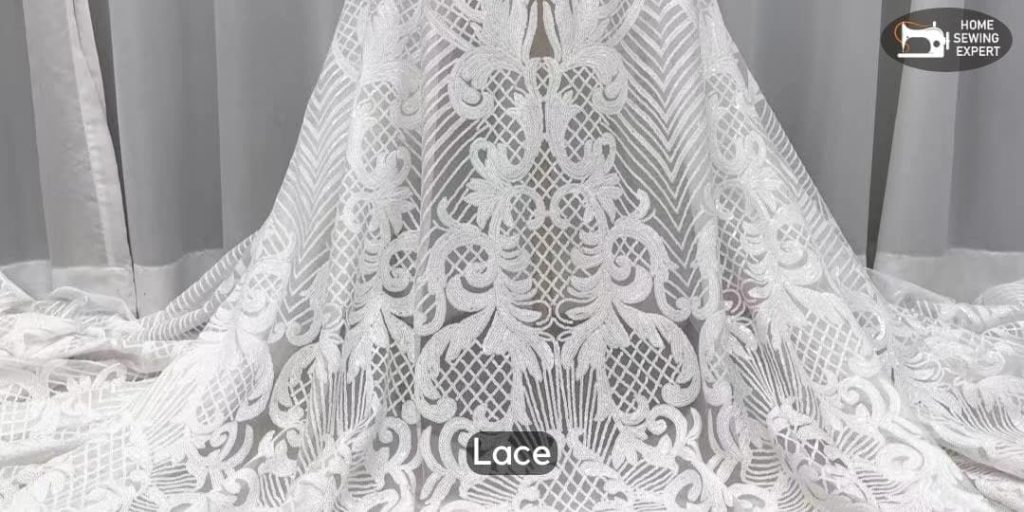
Lace is a decorative fabric that is made from delicate knitting or crocheting a thread or yarn. Lace is known for its web-like structure and has a see-through outlook.
Lace fabric consists of two parts: a body fabric, which is a relatively plain knitted fabric, and a designed fabric which has a delicate decorative design.
Traditionally it was made of silk, linen, and gold only, but nowadays, it is usually made of cotton.
The most common application of lace nowadays is in bridal dresses, and grown with decoration along the neckline, sleeves, waistline, and any other border area of the dress. It is also used highly in lingerie and decorative undergarments.
Satin
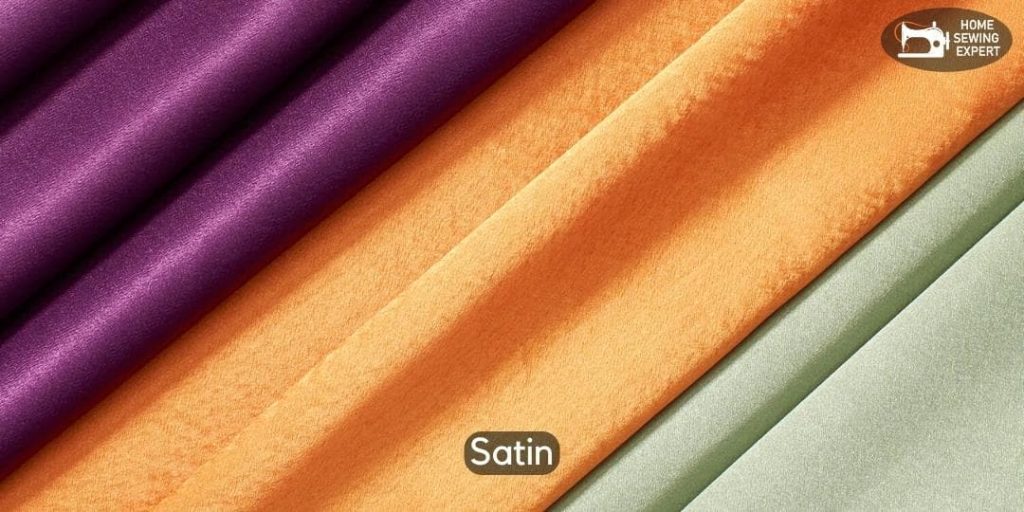
As discussed earlier, satin is one of the three basic weaving techniques, and the resultant satin fabric has a shiny side and a dull side. Overall the fabric is soft, lustrous, and a symbol of elegance.
Satin fabric may be composed of cotton, silk, polyester, or nylon yarn and thus have a variety of forms.
This fabric has a wide application in lustrous apparel especially gowns, party dresses, nighties, suits, and in many other party and ceremonial wears.
Velvet
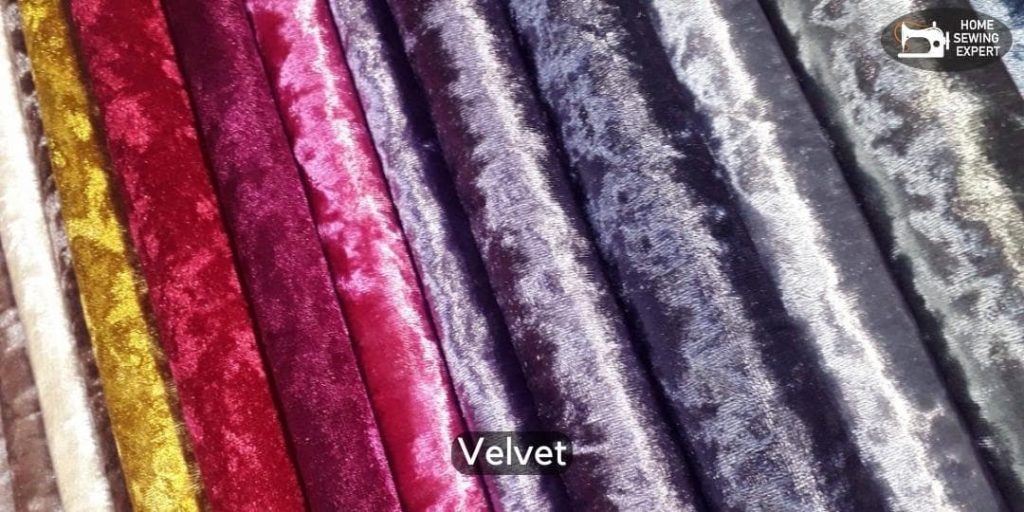
Velvet is a lustrous, soft, and luxurious fabric that is made from complex short pile tufting of a woven fabric. Due to its lustrous outlook and complex production method, velvet is a symbol of royalty and grace.
Velvet can be made from different materials, including cotton, silk, polyester, and more, thus having a wide variety in its-self.
The common application of velvet is in coats, ties, shirts, skirts, blouses, and indoor and outdoor wear.

Hello, My name is Malinda Spicer. in my 10th grade, my granny gifted me a mechanical sewing machine. Since then, my whole life revolves around sewing. I made my hobby into a profession by getting a professional degree in fashion designing. I had learned quite well about sewing in the past 20 years. I hope to be of help by sharing these experiences and expert advice with my fellow sewers.
